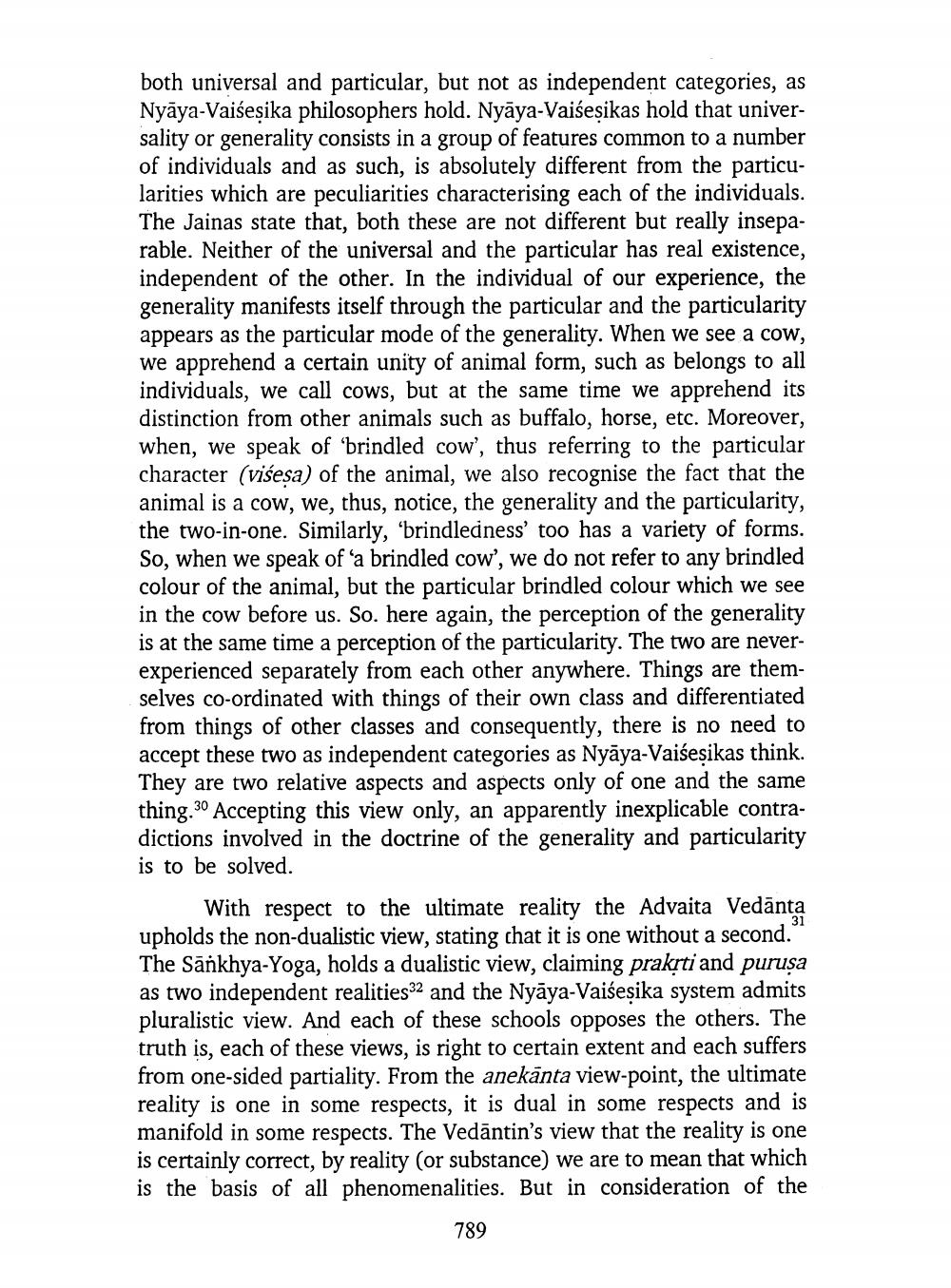________________
both universal and particular, but not as independent categories, as Nyāya-Vaiśeșika philosophers hold. Nyāya-Vaiseșikas hold that universality or generality consists in a group of features common to a number of individuals and as such, is absolutely different from the particularities which are peculiarities characterising each of the individuals. The Jainas state that, both these are not different but really inseparable. Neither of the universal and the particular has real existence, independent of the other. In the individual of our experience, the generality manifests itself through the particular and the particularity appears as the particular mode of the generality. When we see a cow, we apprehend a certain unity of animal form, such as belongs to all individuals, we call cows, but at the same time we apprehend its distinction from other animals such as buffalo, horse, etc. Moreover, when, we speak of 'brindled cow', thus referring to the particular character (visesa) of the animal, we also recognise the fact that the animal is a cow, we, thus, notice, the generality and the particularity, the two-in-one. Similarly, 'brindledness' too has a variety of forms So, when we speak of 'a brindled cow', we do not refer to any brindled colour of the animal, but the particular brindled colour which we see in the cow before us. So, here again, the perception of the generality is at the same time a perception of the particularity. The two are neverexperienced separately from each other anywhere. Things are themselves co-ordinated with things of their own class and differentiated from things of other classes and consequently, there is no need to accept these two as independent categories as Nyāya-Vaiśesikas think. They are two relative aspects and aspects only of one and the same thing.30 Accepting this view only, an apparently inexplicable contradictions involved in the doctrine of the generality and particularity is to be solved.
With respect to the ultimate reality the Advaita Vedānta upholds the non-dualistic view, stating chat it is one without a second.“ The Sānkhya-Yoga, holds a dualistic view, claiming prakrti and purusa as two independent realities32 and the Nyāya-Vaisesika system admits pluralistic view. And each of these schools opposes the others. The truth is, each of these views, is right to certain extent and each suffers from one-sided partiality. From the anekanta view-point, the ultimate reality is one in some respects, it is dual in some respects and is manifold in some respects. The Vedāntin's view that the reality is one is certainly correct, by reality (or substance) we are to mean that which is the basis of all phenomenalities. But in consideration of the
789




